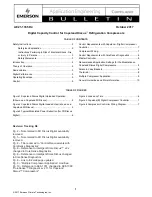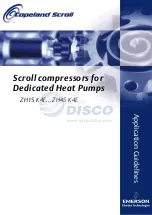
Optional equipment
4.1
BOGE-Duotherm BPT
Page 40
BOGE Operating instructions for C 15 series screw compressors
Maintenance
Lime, oxides as well as grease or oil will deposit in the ducts of the plate heat
exchanger during operation.
Regular cleaning will prevent thick deposits clogging individual ducts of the
plate heat exchanger.
Cleaning intervals
Excessively soiled and limy water:
six months
Moderately soiled water, surface water: one year
Lightly soiled water:
three years
Recommended cleaning agents
Grease or oil deposits: Paraffin
Oxide or lime deposits:
formic acid, acetic acid or citric acid
WARNING!
Always observe the instructions of the cleaning agent manufacturer!
Cleaning methods
Flushing:
–
First close all stop valves in the supply lines.
–
Close all stop valves in the discharge lines.
–
Wait until the plate heat exchanger has cooled down.
–
Open the flushing connections and drain the plate heat exchanger.
–
Flush the plate heat exchangers.
For this purpose, pump one of the above mentioned cleaning agents
through the plate heat exchangers for an extended period of time.
–
After flushing, rinse the plate heat exchanger thoroughly with water
(e.g. using a high pressure hose).
Enhance the cleaning action by the following measures:
–
Use a larger mass flow rate than for standard operation.
–
Flush the cleaning agent through the plate heat exchanger in opposite
direction to standard operation.
Allow to react (tenacious soiling):
–
Dismantle plate heat exchanger.
–
Fill plate heat exchanger with one of the above mentioned cleaning
agents.
–
Allow the cleaning agent to act for at least six hours.
Point the connection upward to allow gases to escape.
–
After cleaning, rinse the plate heat exchanger thoroughly with water
(e.g. using a high pressure hose).
NOTICE!
If the cleaning measures specified above are not sufficient, you should have
the exchanger cleaned by a service company. Boge service will recommend
contracting firms on request.
















































